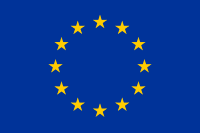How to implement your Change Impact Assessment
Explore how to implement your Change Impact Assessment
About this process
This process belongs to Change Impact Assessment Framework
Explore how to implement your Change Impact Assessment
How to implement your Change Impact Assessment
- Embrace the value of active digital participation and the role of CHIs. Have a clear background of theoretical reference on active digital participation and the role of CHIs (check point 2 and 3 of the document)
- Choose and use the assessment process and methods that best suit your needs. Here, we suggest relying on the guidance of the Europeana Impact Playbook, which is specifically designed for the Cultural Heritage Sector and the digital realm. In addition to Europeana Impact Playbook, we’d like to put your attention on other existing instruments for change measurement that can be useful for building your own evaluation:
- Behaviour Change Toolkit: Annex 10: How to describe your behaviour change activities, p. 56
- Power to the people: tab with "Starting off"- "Making progress" - "Best practice" - "leading and championing", pp. 12-14
- Evaluation Toolkit for Museum Practitioners: Evaluation checklist, pp. 24-25.
- 2 tools of Inspiring Learning for All (Improve performance, promote best practices, Measure outcomes, Evidence for impacts)
- Julie’s bicycle: assessing the environmental impact of Cultural institutions
- Digital Maturity Self-Assessment Tool
- Museums of Impact toolkit
- MeMind project Impact Canvas
- The activities you undertake have an impact on society and an assessment based on the “8 Impact Areas” helps you uncover what that is: consider the impact areas proposed at the very beginning, from the “planning” phase.
- Focus on what your participatory activity can actually change: this will help you define a set of metrics that you will be able to collect and report on across time. In turn, that will help you connect the dots with your inspirational goals.
- Yet, be creative and keep your eyes open to the change: assessing positive impacts of your digital participatory activities is an iterative process. It can regard behaviours, thoughts, future proposals, relationships, and new awarenesses - not only hard skills building.
Reference: IN-PART-2023-01-37





Share: